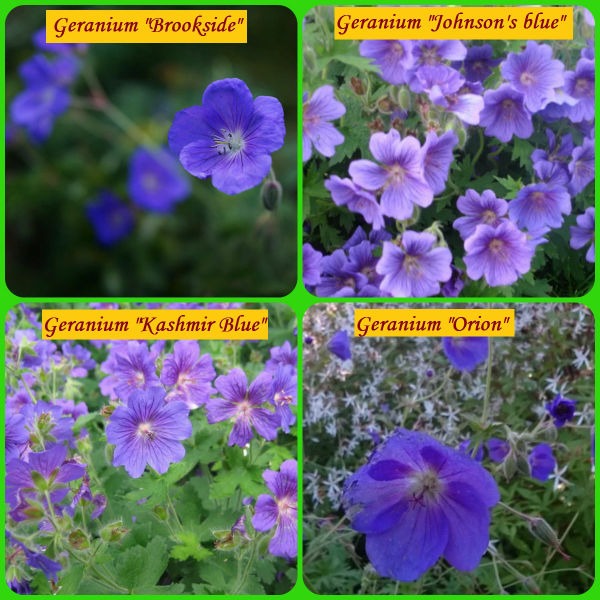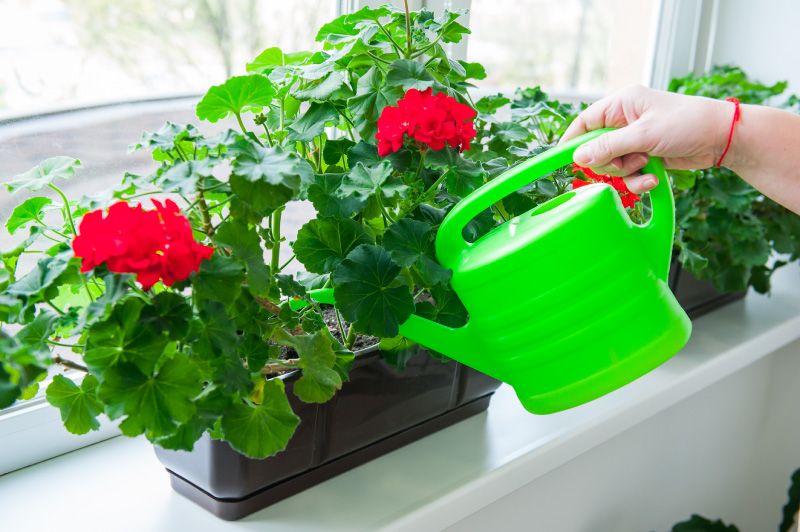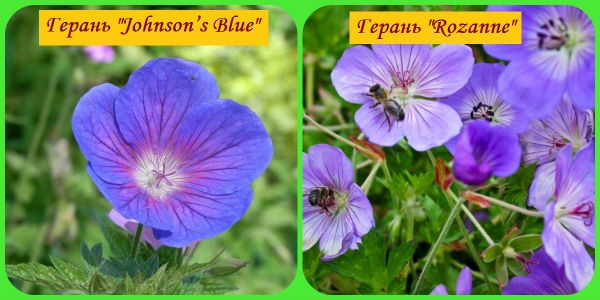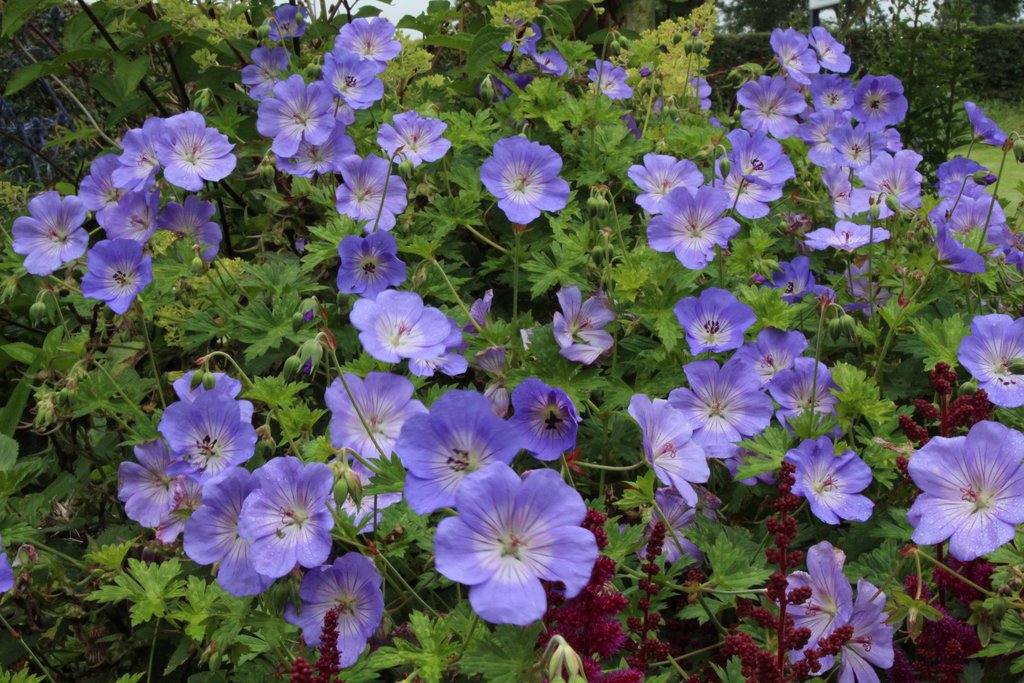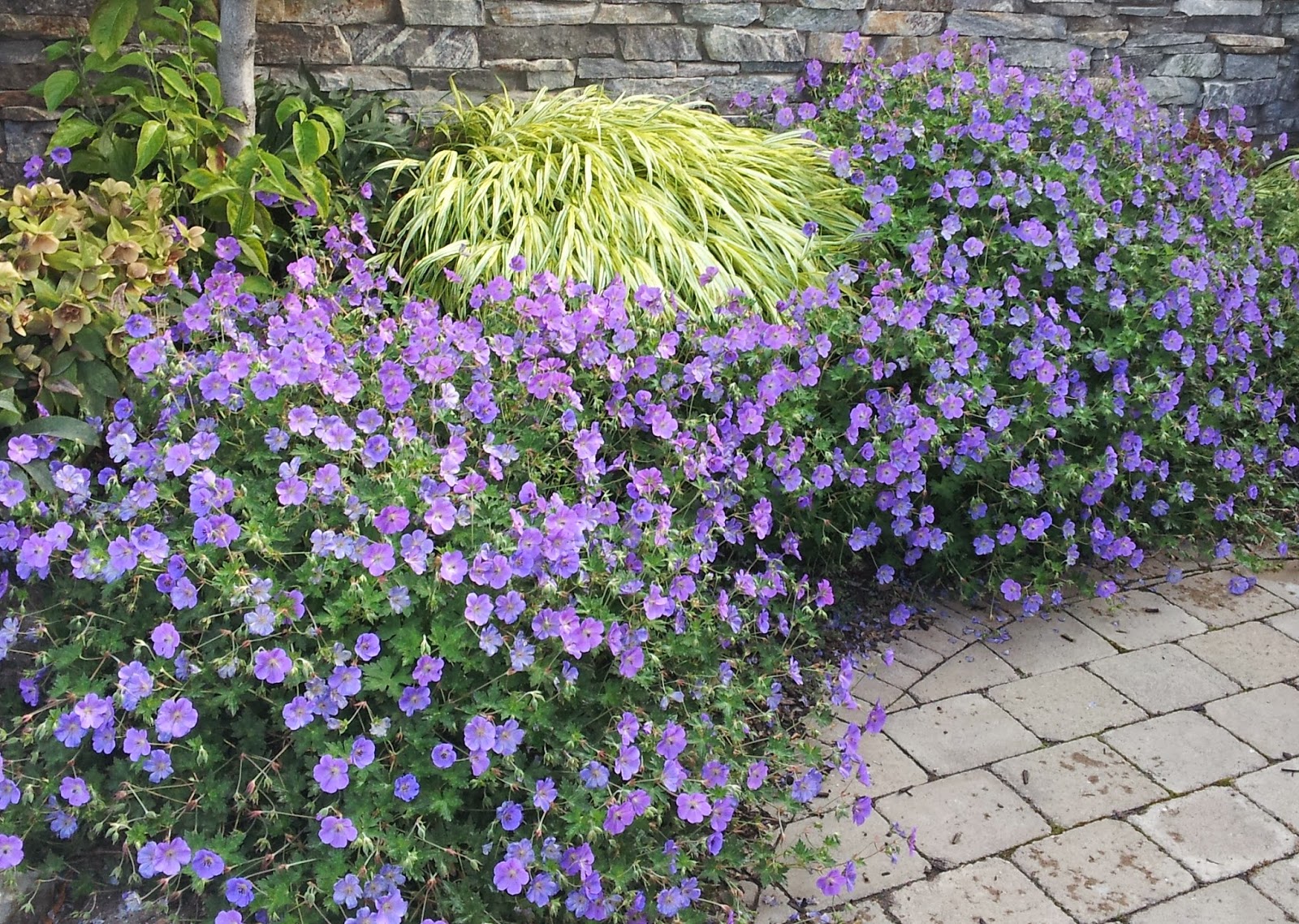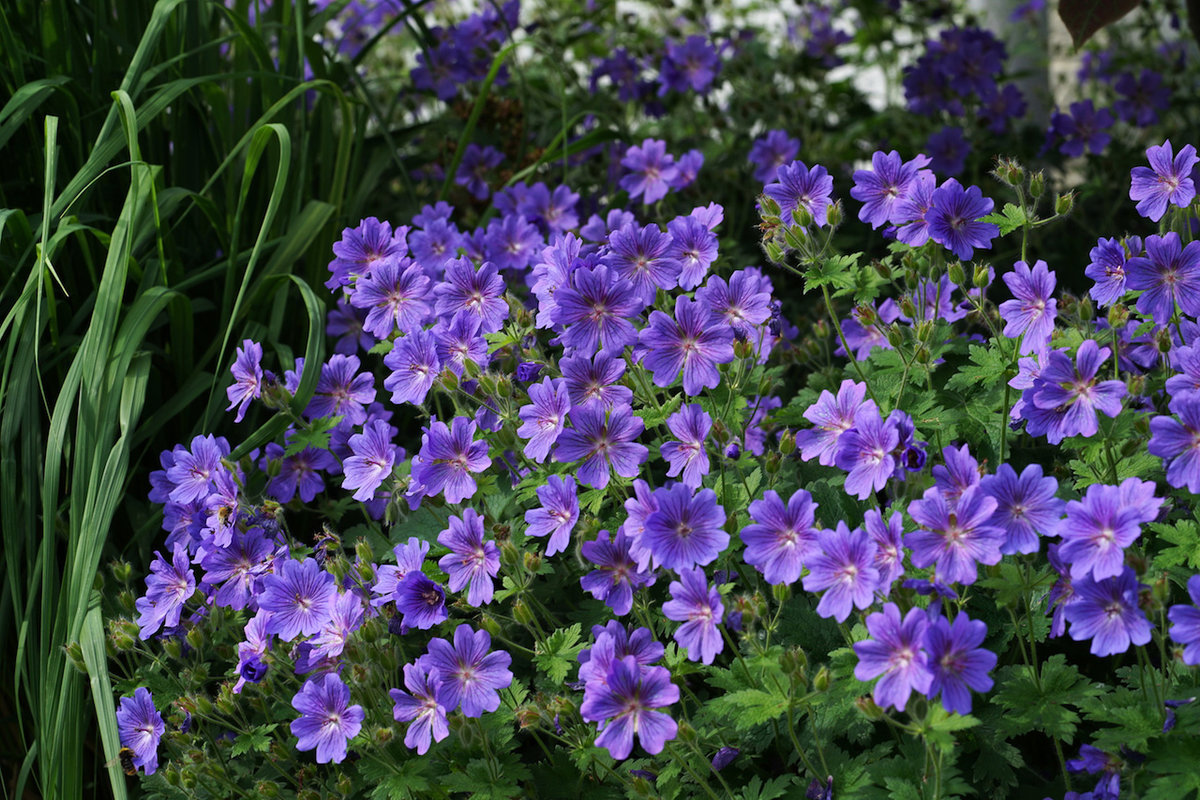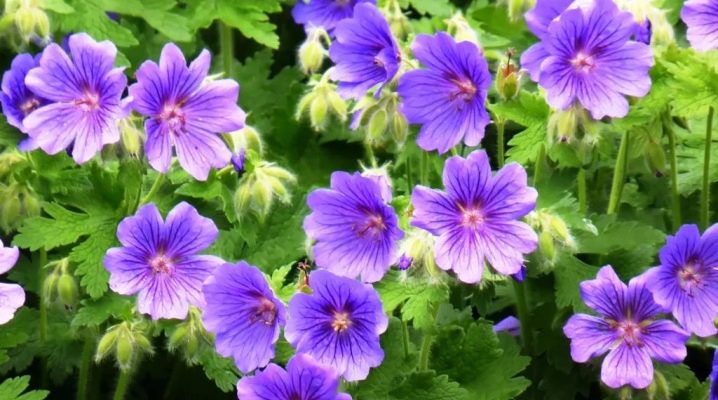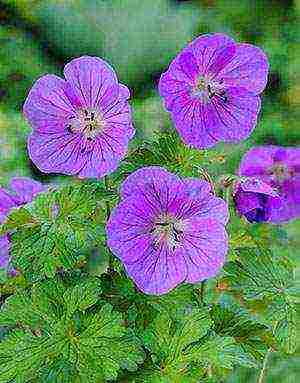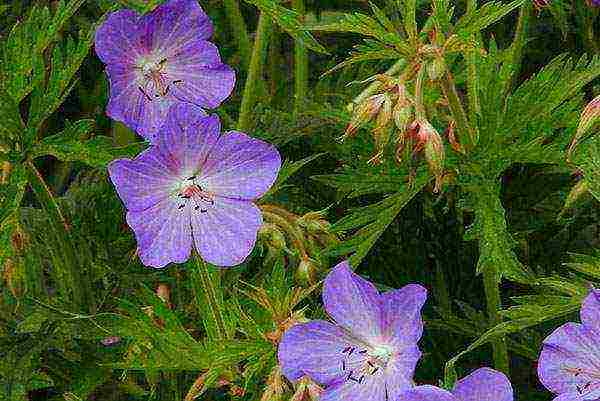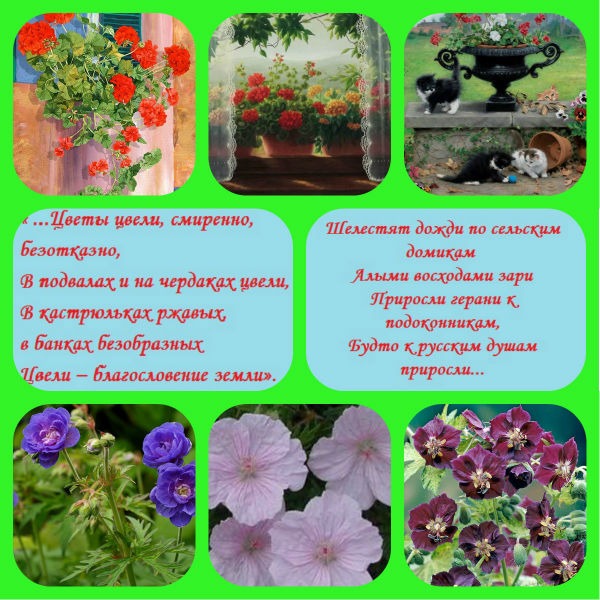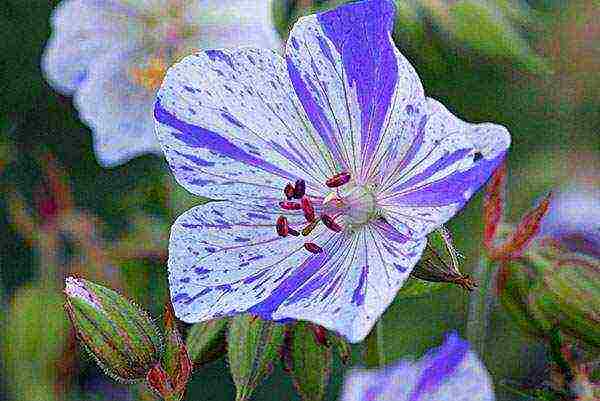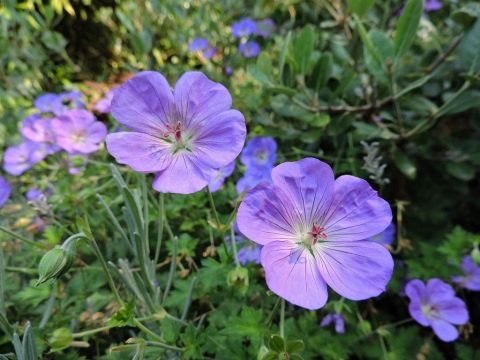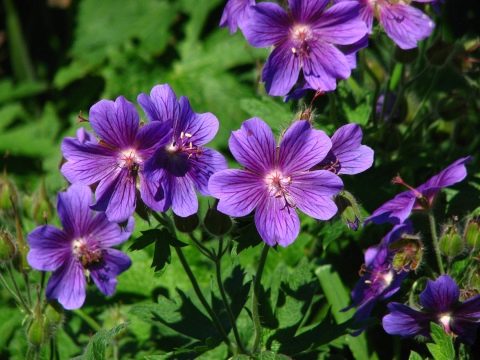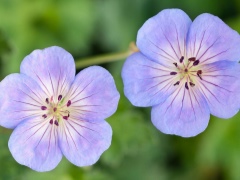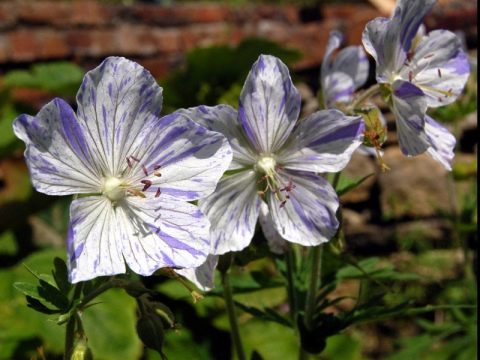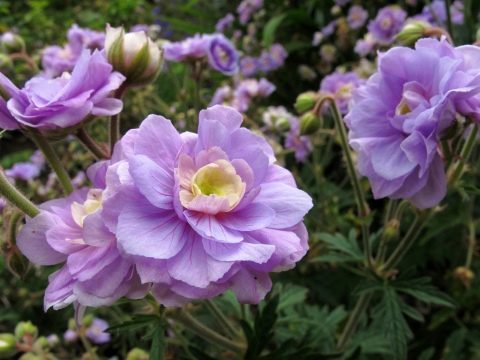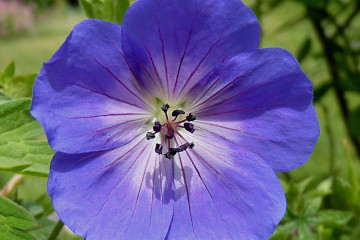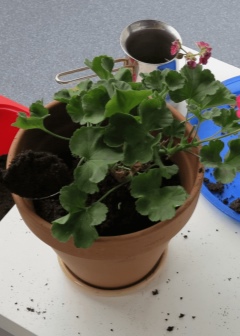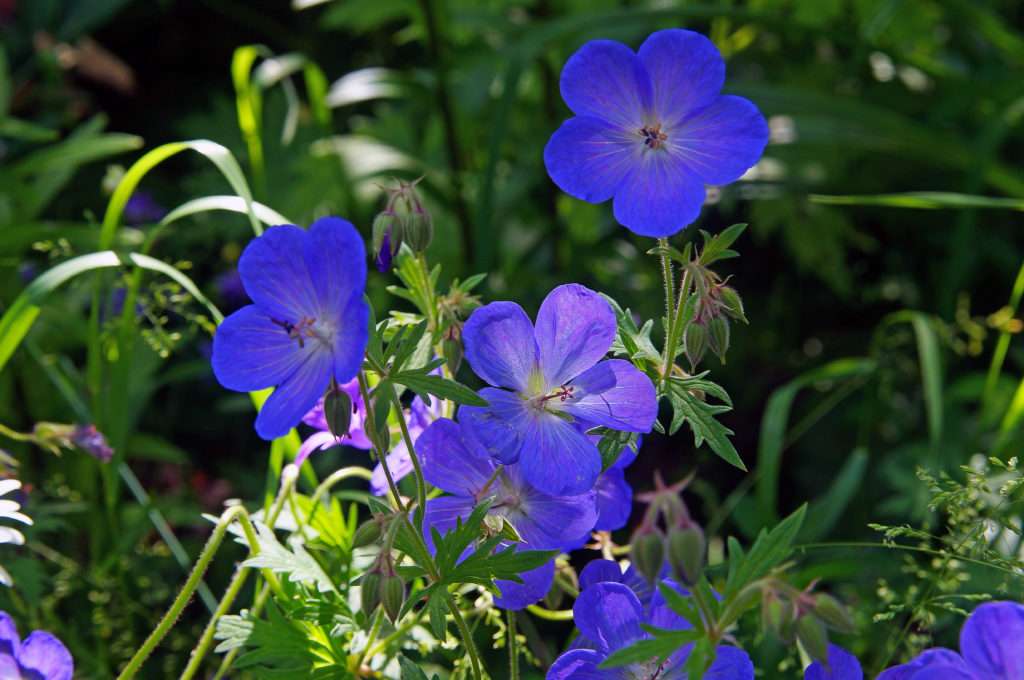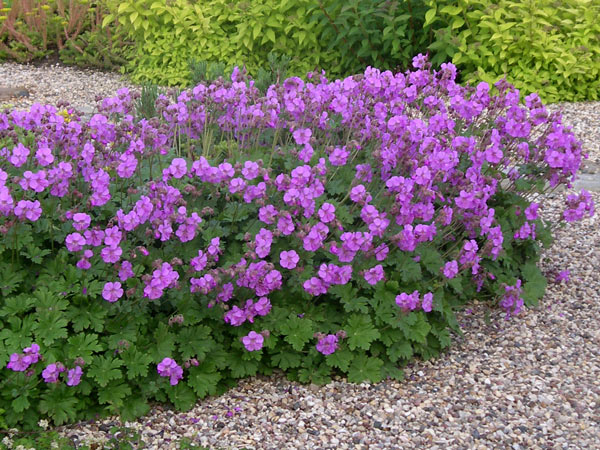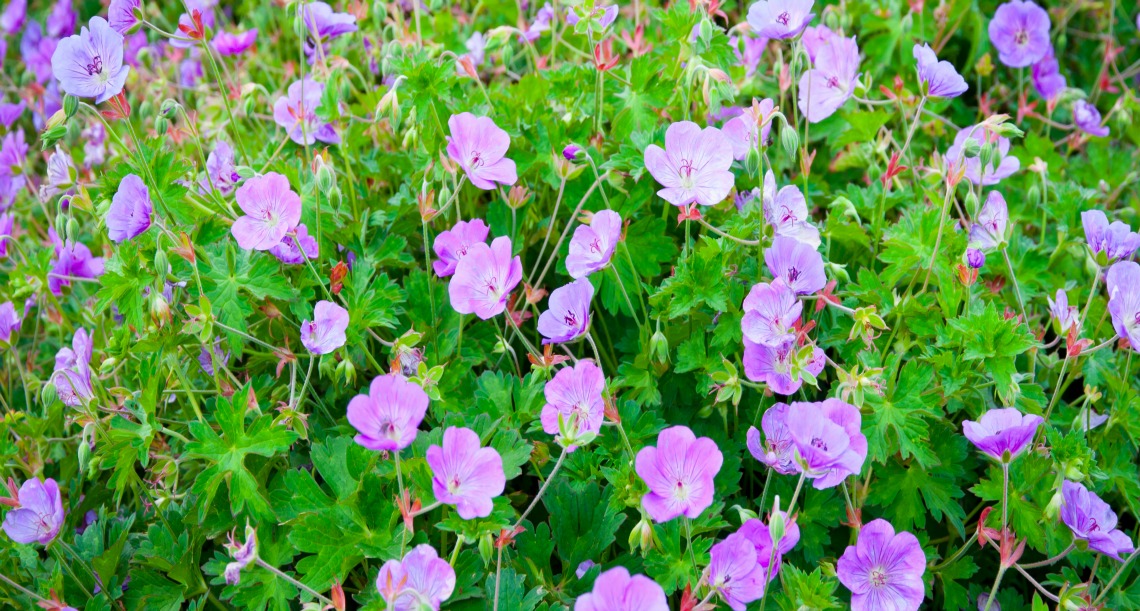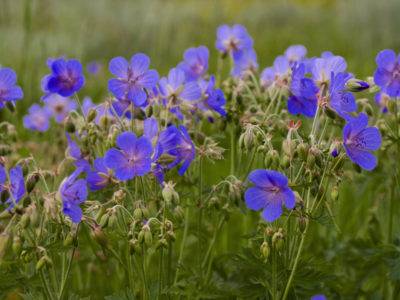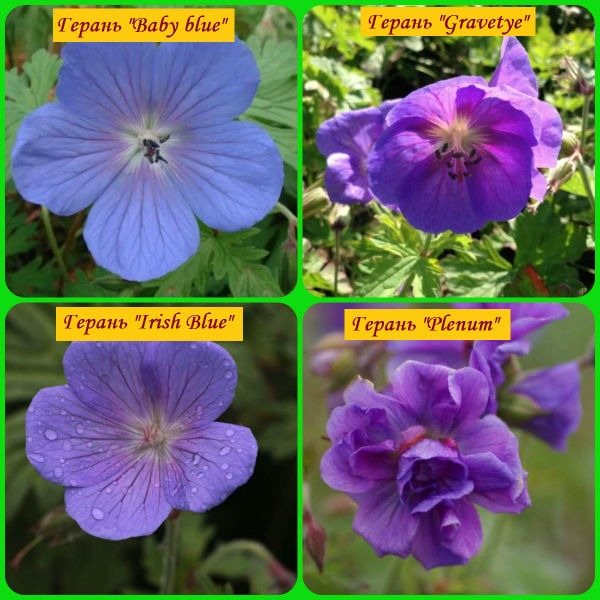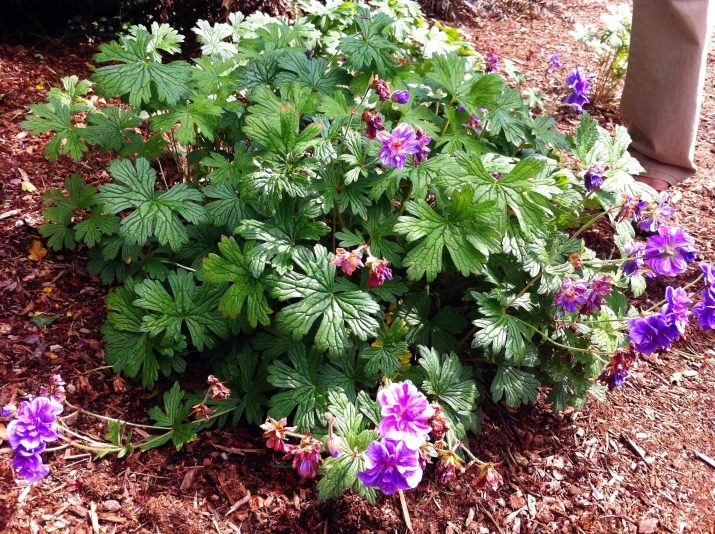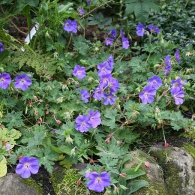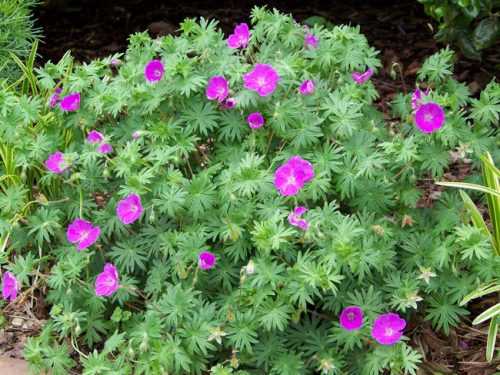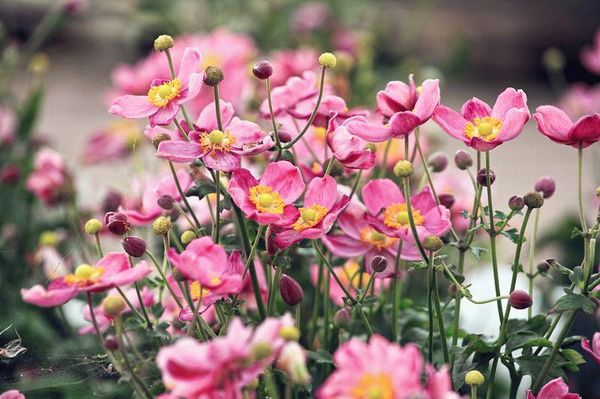Planting and home care rules
In general, tulip geranium, like its relatives, is unpretentious, but if the conditions of detention are not observed, it can lose its peculiarity, its flowers will take on the appearance of an ordinary geranium, in particular, an excess of ultraviolet radiation can serve this.
Lighting
Tulip geranium loves lighted places, but in direct sunlight, the leaves can get burned, so the light should be diffused.
Lack of light can lead to the fact that the stems of the plant will stretch out, the leaves will turn pale, the flowering time will be shortened, and the buds may not form at all.
Temperature
Geranium is also sensitive to sudden temperature changes, optimal for it in the summer is 21 - 26 ° C degrees, in the winter it is 14 - 16 °. It is also necessary to protect the plant from drafts and hot air coming from heating appliances.
The soil
When choosing a soil, it is necessary to pay attention, first of all, to drainage, which should prevent root rot, which can be sand or sod. You can use a ready-made mixture or prepare it yourself
There are two mixtures available for growing tulip geraniums:
- Mix 2 parts of garden soil with 2 parts of peat and add 1 part of sand.
- 2 parts peat plus 2 parts humus, add 2 parts turf and mix with 1 part sand.
It is best to plant in a clay pot with a diameter of 12-14 cm and a height of 10-15 cm.
Watering
In the summer, the geranium should be watered four times a week, and in the winter, once is enough. In the case of an excess of moisture, improperly selected soil, rotting of the roots is possible, then the plant will die before the owners discover the problem.
Top dressing
In the autumn-winter period, it is necessary to feed one or two times a month with liquid fertilizers, which contains phosphorus and potassium
It is worth noting that an overabundance of fertilizers, especially nitrogen fertilizers, can lead to the fact that, first of all, the green part of the plant will grow to the detriment of rich flowering.
Care features
To preserve the decorative properties of the tulip geranium, so that the flowers retain the shape of an unopened tulip, it is advised to pinch the tops of the plants to give bushiness, remove dried flowers so that new ones appear in their place, avoid drafts and strong winds if pelargonium is outside.
If the flowers have opened, they must be removed, if this happens again, then you should cut the geranium at the root and try to grow a plant with tulip-shaped flowers from the new shoots.
Botanical characteristics and history of origin
The flowers of this plant variety have a pleasant aroma, large, bowl-shaped, bright blue with a white center, about 30-50 cm high. It blooms for a long time - from June to frost, and abundantly.
The Roseanne geranium has two varieties. The Azure Rush geranium has pale lilac flowers with a white center. The shoots are much shorter, so the bush is smaller than that of Roseanne. Even more compact Geranium Lilac Ice is rather a collection variety. It does not bloom so abundantly, but the color is surprising - depending on the weather, it changes color from pale cold purple to pink with a metallic sheen. The petals are solid without a white center.
There is a version that the Roseanne variety first appeared in the UK, but this is not the case. Scientists are sure that the homeland of this type of geranium is South Africa or India (what other types and varieties of geraniums are there?). In the 17th century, the British began to introduce new varieties of plants, so Roseanne appeared on English flower beds and balconies. In the 18th-19th centuries, this variety first appeared in Russia, and perfectly acclimatized even in the northern corners of the country.
Disembarkation and leaving
Those varieties of geraniums that grow very wide in width due to the fact that the roots are located close to the soil surface must be planted at a distance of at least 30 cm from each other, otherwise they will all connect next summer.
Cultivars, the appearance of which is a miniature bush and having large leaves with large cuttings, should be planted at intervals equal to twice the size of the cuttings. With such a planting, the rounded shape of the bush will not be spoiled, due to which the plant acquires special attractiveness.
Cambridge garden geraniums are easy to care for and do not need pruning. Its inflorescences can be removed, or you can not, as they fall off on their own. Geranium bushes are very dense, so often weeds do not even grow under them, which means that weeding is not needed. In the event that mulching is done on free areas, there will be no need even for loosening.
One of the positive properties of geranium is that it is practically not susceptible to diseases at all.
How to take care of it properly?
Temperature regime
In summer, geranium prefers moderate heat, so the temperature should be 17-23 degrees Celsius. If the temperature is firmly kept within 12 degrees Celsius, then geranium does not bloom. Although too high a temperature has a detrimental effect on flowering.
Watering
Hybrid geranium is a drought tolerant plant, so it is better not to top up than to overflow. Watering in the summer is carried out as the top layer of the soil dries out. In winter, moistening is rarely carried out, but it cannot be brought to complete drying out of the soil. Use warm and settled water for irrigation.
Top dressing
It is advisable to introduce nutrition for geraniums with each watering, only reducing the dosage. If you water the flower every day, then the weekly feeding rate should be divided by 7-10. No fertilization is required in winter. In the spring, it is necessary to use formulations containing nitrogen.
Reference! Complex universal preparations are suitable for young plants that have not yet bloomed. Before flowering, apply fertilizers with a high concentration of potassium.
Pruning
After the plant has finished flowering, pruning is carried out, as a result of which the apical cuttings are cut and used for rooting. The cut site is treated with a fungicide, sprinkled with activated carbon powder. Old leaves that remain on the plant do not need to be removed yet, but wait until young shoots begin to grow.
Breeding features
Geranium Peony can be propagated in two ways - by cuttings and seeds. The first method is suitable for year-round production of new plants, the second is only for spring plants. Most growers choose cuttings. And this is not surprising. After all, this method is the least troublesome and most effective.
The shoot chooses such that it has at least four leaves. After cutting, the stalk is placed in water until it sprouts the first roots. With the development of the root system, the cutting is placed in a small container with prepared soil and placed in a well-lit place.
The seed propagation method is used more by professional breeders. To do this, in the spring, they sow them in a sandy-humus substrate, which is pre-treated with a solution of potassium permanganate. This manipulation will disinfect the soil.
Geranium is famous for its unpretentiousness and amazing beauty of flowers. How to understand all the diversity of its species and varieties? On our website, we have prepared a number of articles about this magnificent plant, you can read about the unpretentious Robert and the interesting Plenum geranium, about the mysterious beauty - black geranium, about the Angel variety hybrids and Roseanne blooming all summer, find out what Max Fry is good at, how to care for fragrant and aromatic Lemon, how to grow rosebud.
The materials in this article will help novice growers grow healthy and blooming Geranium Peony.Care manipulations are not difficult at all, therefore, if you follow all the recommendations, there should be no problems with growing.
Description and appearance of the plant
Today, there are more than 350 varieties of geraniums in the world. The native land of this plant is most likely India or Africa, although many people think that the plant belongs to immigrants from the UK. In any case, the British brought geranium to our lands, who used it to decorate flower beds and gardens.
The "Rosanna" variety is considered the most beautiful type of geranium.
The first years, the couple enveloped this hybrid with their care and affection, and after a few years they brought this variety to a specialized exhibition, which attracted a lot of attention from lovers of beauty.
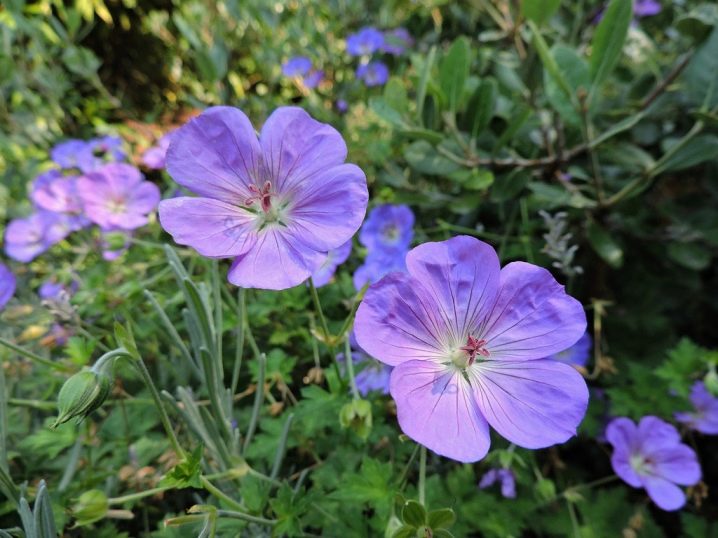
In its arsenal, garden geranium has many shades, including purple, blue-violet, and whitish. The stems of "Roseanne" are long and recumbent, and the large flowers are shaped like a glass. The leaves have a rich color and a pleasant smell characteristic only for this species. The foliage has its own unpretentious pattern, which is very striking. Mature shrubs grow up to 70 centimeters wide.
The Roseanne geranium has two distinct varieties.
- Azure Rush with pale purple flowers and a white center. The bush is much smaller than the Roseanne.
- Lilac Ice is a collectible look. Its flowers tend to change their color in accordance with the weather.
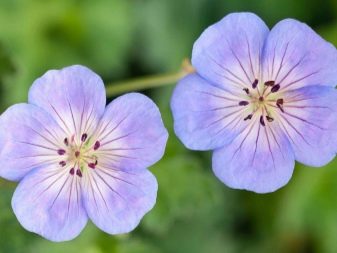
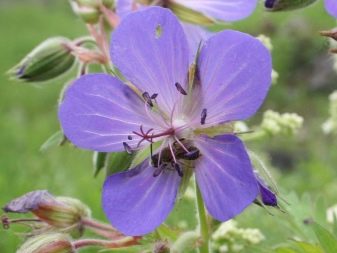

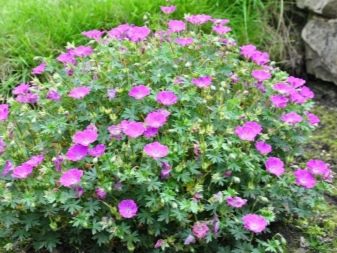
Geranium species
Previously, geranium was not grown as an ornamental plant, but as a plant with medicinal properties and a special scent of leaves.
Ornamental garden geranium varieties first appeared in the UK.
Bred cultivated perennial species and hybrids of garden geraniums with large beautifully carved leaves and bright flowers. More than fifty different species are grown in the gardens of Russia: winter-hardy varieties in the form of perennials and thermophilic varieties of geraniums as annual crops.
Winter-hardy decorative varieties successfully withstand winter in the middle zone of the country. Annual crops are dug up, planted in flower pots and they survive the winter in the house.
These flowers will fit well into the design of an alpine slide and borders or mixborders, you just need to choose the right color shade.
This modest plant is simply irreplaceable for creating flower beds that are currently fashionable, imitating a natural rock overgrown with flowers or a natural-looking meadow.
Garden geraniums can be divided into tall geraniums above 50 cm and short ones from 25 to 50 cm.
Tall species of geranium:
- Georgian. Popular in the gardens of the country, very unpretentious. The plant is tall, grows up to 85 cm, rounded gray leaves on long cuttings turn red in autumn, purple flowers are collected in umbellate inflorescences. This variety is very fond of the sun and good nutritious soil. A large bush with abundant flowering looks like a lush bouquet of purple flowers. Often the bush is grown singly. ‘Johnson’s Blue’ with small, light purple flowers.
- Gorgeous. Bushes up to 50 cm with light purple flowers and beautiful leaves that turn red in autumn. Does not form seeds, multiplies only by division. Used in mixed flower beds. The most famous variety, “Mrs. Kendall Clark "- with lush grayish-gray flowers with a pink tint.
Red-brown. The variety is decorative because of the beautiful green to frost leaves and small dark brown flowers. It can grow up to 80 cm. Popular varieties are ‘Spring Time’, ‘Samabor’.
Low-growing geraniums:
- Himalayan. Height no more than 30 cm, large bluish flowers with reddish veins. Very long flowering period, from May to late summer. The compact small shape of the bush and long flowering make it possible to successfully use this variety in rockeries and borders. Sorts: "Gravetye" with blue flowers, "Jonson's Вluе" with lilac-blue flowers, "Plenum" with double flowers.
- Dalmatian.One of the lowest varieties, 10 cm high, forms a dense cover of bushes with rounded graceful leaves. It blooms with bright pink flowers of an average size of 3.5 cm from June to September. Loves the sun, does not need frequent watering. The popular variety is ‘Roseum’ with pink flowers, ‘Album’ with white flowers.
- Large rhizome. These are short, 30 cm shrubs with a very thick and long root. Covers the ground tightly, this geranium is good in the foreground in flower beds, rockeries. The flowers are white-pink, the leaves are beautiful reddish-golden in autumn. Loves a sunny place. Sorts: "Spessagt", "Ingwersen's Variety", "Insversen".
- Ash. Has the following varieties: Ballerina (ballerina), Purpureum. Pyrenean. This plant is 30 centimeters high, can grow in a shady place, blooms for a long time, almost all summer, starting in July. This plant has large leaves 8-10 cm wide, flowers are small up to 1.5 cm in a pure white circle. Able to survive the winter without shelter.
- Geranium Andris. Plant of medium height 40-50 cm with large pink flowers 30 cm in diameter and evergreen leaves on a long stalk. Varieties: `Betty Catchpole` -with pink flowers with narrow petals,` Beholder`s Eye` -with dark pink flowers.
How to plant?
A place
First of all, you need to choose the right place where the plant will be located, which is very important, because Lady Gertrude's Pelargonium leaves are very delicate and sensitive to direct sunlight, therefore, accordingly, in the house / apartment you need to place it on the windowsill where the light is scattered ... Also, despite the fact that Pelargonium is a very light-loving plant, it is important to place the pot with the plant in the afternoon, where the light is much less than where it stood before, since from the excess of light the leaves of Pelargonium become thin and sluggish, the bush becomes sick and nondescript
Also, despite the fact that Pelargonium is a very light-loving plant, it is important to place the pot with the plant in the afternoon, where the light is much less than where it stood before, since from the excess of light the leaves of Pelargonium become thin and sluggish, the bush becomes sick and nondescript. Therefore, based on the above requirements, we can say that it is recommended to place the plant on the western or eastern window sills, where the action of the sun is less active.
Therefore, based on the above requirements, we can say that it is recommended to place the plant on the western or eastern windowsills, where the action of the sun is less active.
Important! On average, for the active and correct development of this culture, 4 - 8 hours of being under diffused sunlight is enough.
The soil
Loose and nutritious soil is ideal for Lady Gertrude's Pelargonium, so avoid the presence of various weighting agents (for example, clay) in the substrate.
It is also important to place good drainage at the bottom of the container in which it is planned to plant the plant. Chipped bricks or expanded clay stones of a very small size are perfect
The optimal composition of the substrate for Lady Gertrude's Pelargonium:
- Sand - 1 part.
- Peat land - 1 part.
- Sod soil - 1 part.
In acidified soil, Pelargonium cannot grow, so the soil must have a slightly acidic or neutral reaction (pH 5.5 - 6.5).
Within a few days after transplanting (young or adult in a larger container or just purchased in a store), the plant must be very carefully watered in order to in no case allow the substrate to become waterlogged.
You can find out if Pelargonium has taken root by the appearance of new growths on the stem.
Botanical description and history of origin
Pelargonium Lady Gertrude is a hybrid variety obtained by crossing zonal and ivy-leaved pelargonium. To obtain this variety, breeders have worked for about 25 years. The result of this work is an amazing plant that looks like a very delicate rose.
Lady Gertrude has an underground rhizome with alternating thick and thin sections. On a small number of peduncles, large pink petals appear, which, growing and blooming, take the shape of a rose, from which the resemblance to the latter is so noticeable.
It is also distinguished by the presence of large textured decorative leaves. The bush itself is undersized, tends to grow in breadth, but at the same time it is quite dense, thanks to which Pelargonium can be given absolutely any shape.

